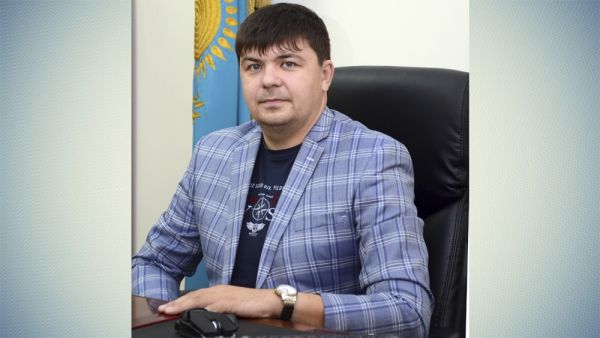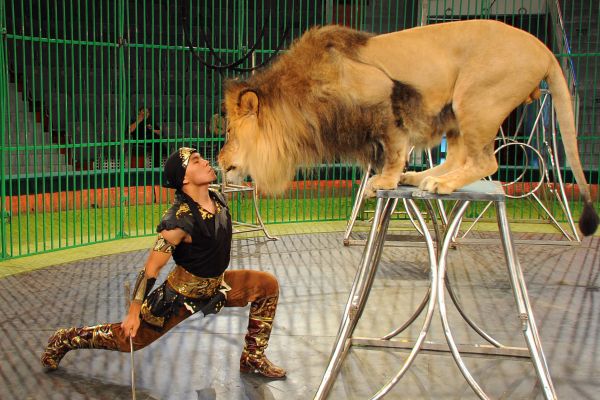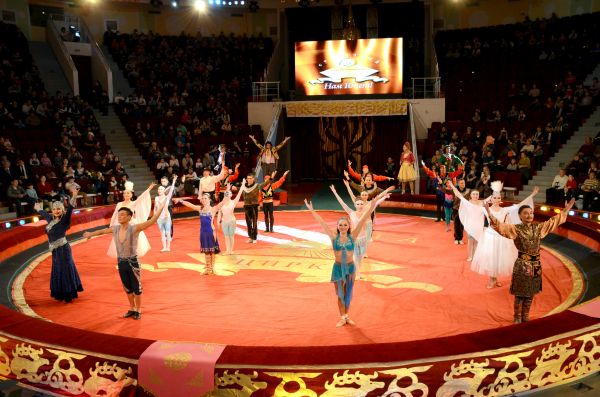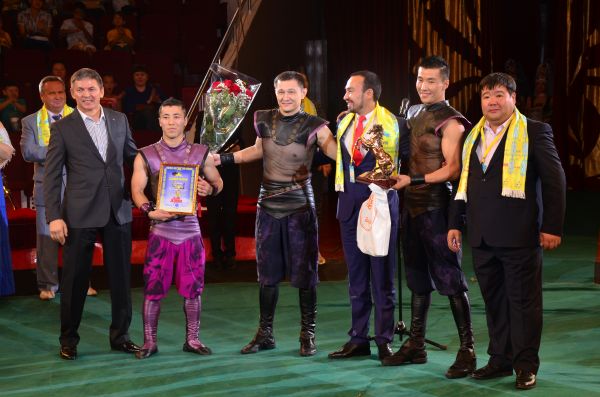ASTANA – Last December, the Capital Circus marked its 10th anniversary. In its short life, it has become the leading circus in the country. This comes as no surprise, as founding members of the Capital Circus include key performers from the old Almaty Circus.
The Capital Circus participates in the international Echo of Asia festival, which annually brings together masters of the circus arts from all around the world. Deputy Director of the Capital Circus Vladislav Bernadskiy explained in an interview the difficult but interesting life of circus artists.
Each circus has its unique feature. What is yours?
It is that our circus hosts all the international events in Kazakhstan that promote our national circus art at the international level. We invite colleagues from neighbouring and distant foreign countries; we try to arrange tours of our artists abroad. Currently, our artists are on tours in America, Indonesia and China, and they will soon go to Spain and then to Italy.
Part of this unique feature is also the opportunity for Kazakh artists to perform abroad, which is ensured through the international events we hold. The staff of the Capital Circus was formed from the old Almaty Circus. Those artists have done a great job, and we are grateful for that. New artists who come to us and become real professionals, proving their master skills by performing in international arenas, continue this work.
You regularly host the best representatives of international circus arts. Tell us more about this cooperation.
We closely cooperate with circuses of the post-Soviet area, including the Russian, Ukrainian, Belarusian, Kyrgyz, Uzbek and Turkmen circuses. This year, we’ve started to work closely with a Hungarian circus whose director attended the Echo of Asia festival. We plan to include an act in the international Hungarian circus programme this September. It will be our first step to access the European market. We need this to exchange experience and artists.
It should be noted that we have been very closely cooperating with China for five years already. Today, about half of our circus troupe is on tour in China. This cooperation has a long-term foundation. Artists of the Capital Circus perform in China and win their prestigious awards. We will continue this practice: currently we are working on new acts for our artists to perform in China.
As for the circuses in the post-Soviet area, we want to arrange tours of the Kazakh national circus programme in Russia, Belarus and Ukraine. In this area, we will work together with our colleagues from the Almaty and Shymkent circuses. This programme must be prepared at a high level – we must include the best artists of our country in it – that is why we need to unite our resources. Currently, we are negotiating the opportunity to arrange some arenas in Russia and Belarus.
We are also negotiating with our Turkmen colleagues to develop a big tour. This programme will be based on the national Kazakh culture and the identity of Kazakh circus arts. Each circus in Kazakhstan is supervised by the akimats [administrations] of their cities; nevertheless, we closely cooperate. This cooperation is, first of all, aimed at ensuring tours of different circus programmes in Kazakhstan. We host artists from Ukraine, Russia and Belarus, who come with different programmes, and with our other Kazakh circuses, we develop a plan for these programmes, trying to select the best programmes for our audience.
How often is your circus programme updated?
The peculiarity of the circus is that it is constantly on tour. For the audience to regularly see new acts and new artists, we have a well-functioning conveyor of circus programme tours. It means that when one circus programme moves to other venues, another one comes. This circle is cyclical. It helps us to regularly diversify our repertoire.
How do you work with youth? Where do you find young artists for your performances?
We have a circus and variety art college that prepares artists through secondary education. Annually, we review college students and invite some to join us. Usually, they have their own acts. When they come to the circus, they work with our directors and we start to develop performances, sew costumes and bring their acts to perfection.
Who trains them?
They are already trained in college, where our circus luminaries work as teachers; they specialise in such areas as gymnastics, acrobatics and clownery. Today we have some problems with animal training, but our artists try to emulate the experiences of their colleagues, so this genre is also being developed. There are exotic acts with lions in our repertoire; there are also performing camels, horses, ponies and dogs. We include two other animal acts into the rehearsal programme; they include monkeys and bears. When these acts are ready, we can create a comprehensive circus animal programme to go on tours both in Kazakhstan and abroad.
Do circuses work to attract new artists, like football and hockey teams try to recruit new players?
Of course. This starts from the moment of graduation. Our representatives and our colleagues from the Almaty and Shymkent circuses attend each graduation. The task of each circus is to get the best students. There is competition, but it is carried out through friendly negotiations. Each circus proposes its conditions, and the students, choosing the most appropriate format, decide where they want to work. Speaking of proposed conditions, we offer housing, which is a key factor – we have a residence hall. Moreover, we provide conditions for rehearsals, including director’s assistance.
Let’s go back to animals; they are also circus artists. What kind of animals do you have in your circus, and how often do you need to replace them?
The difference between circus and other types of art is that there is no opportunity to change acts frequently. The circus art is based, first of all, on physical conditions and physiological peculiarities. That is why for the act to be highly professional, an artist must prepare it for many years. Then the professionalism is noted by other circuses, and the artist starts to perform this act around the world. Thus, it is difficult to prepare another act and it takes years.
The same concerns trained animals. As you noted correctly, animals are also artists. That is why animals are replaced in advance. Each animal trainer understands his or her animals; they are like children to them. They almost live together. An animal trainer can usually sense when an animal should no longer be used in an act, and starts to train another animal in advance for replacement. This transition must be carried out smoothly, because it is impossible to replace an animal quickly.
The circus arts can be very dangerous. Have you had any incidents or accidents over the last decade in the Capital Circus?
Thank God, this has not happened to us. We have not experienced serious incidents like this. However, world wide, circus artists die every year. This includes animal trainers, who work with predators; it includes gymnasts and acrobats, performing tricks without any safety devices. They fall, break limbs, become disabled. Unfortunately, this is commonplace. Each artist from the very beginning must be ready for these possible consequences.
Tell us about the timetable of a circus artist. Do they have vacations or days off?
They have almost no days off. Each artist has a personal rehearsal schedule. Artists have rehearsal up to three times a day; they always work and bring their skills to perfection. The only time to rest is on vacation. They go on vacation annually between tours.
What does the payment system of artists look like? Do they receive a salary every month or honoraria?
Our artists receive salaries set by the state. During tours, of course, artists receive honoraria, but they cover only travel costs.
Does this mean circus artists here are really following their vocation?
Yes, it does. There is no financial benefit, only the fulfillment of the sincere desire to be a circus artist.
Has anyone tried to lure your artists away with better financial offers?
It makes no sense. One can invite an artist to perform, organise tours, the artist can perform freely and then go back to the circus. This practice exists. We have artists who interest us as visiting performers, but that doesn’t mean we are interested in them as regular employees. We have our own artists.
What is the most important quality a circus artist needs?
First of all, it is passion for the circus arts. Each circus artist, actually, is first a fan of the circus, and a person who devotes himself or herself to the art. This is common among all artists. Not everyone can become a circus artist – the desire must lie deep in the soul. That is why the circus is a unique art.







